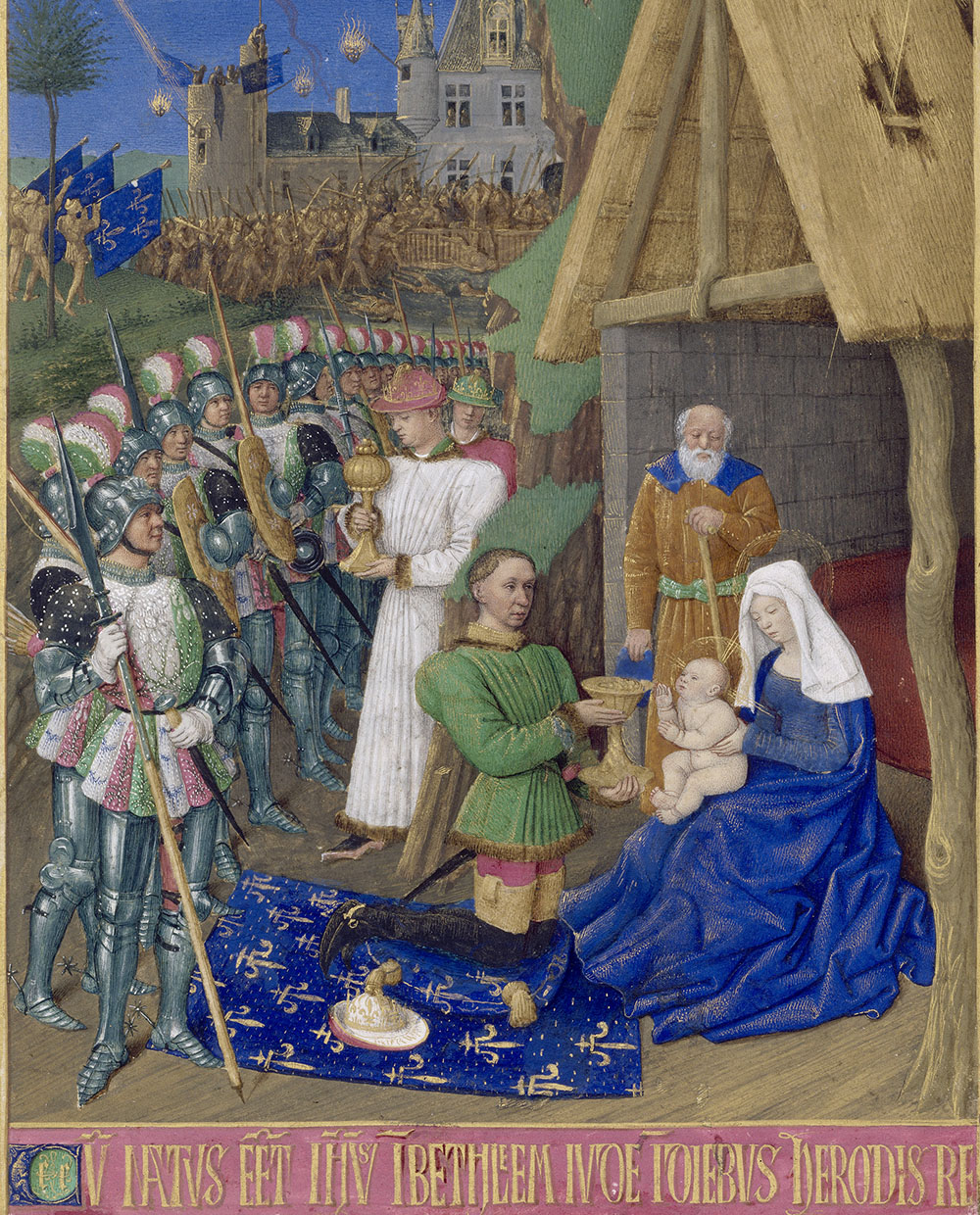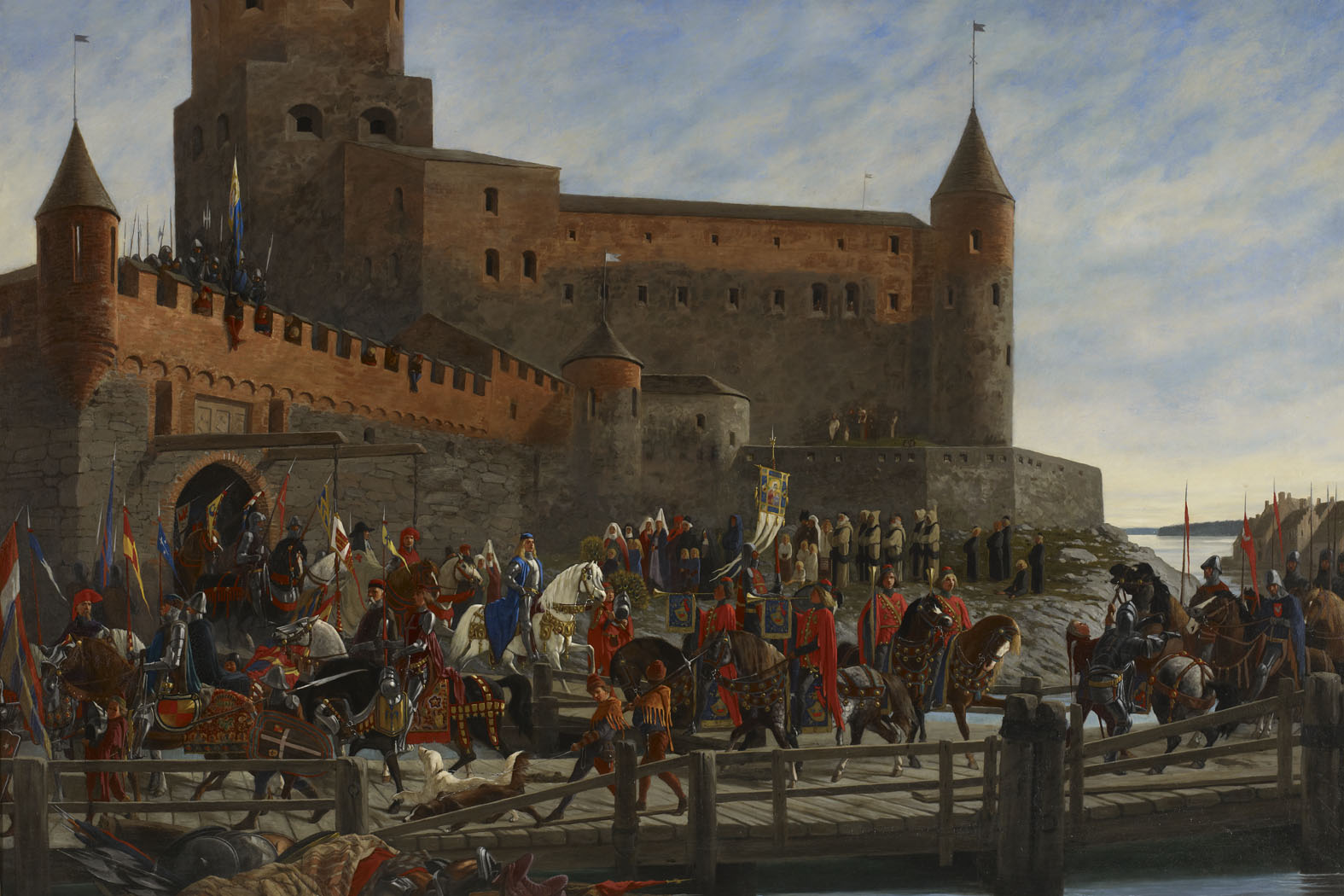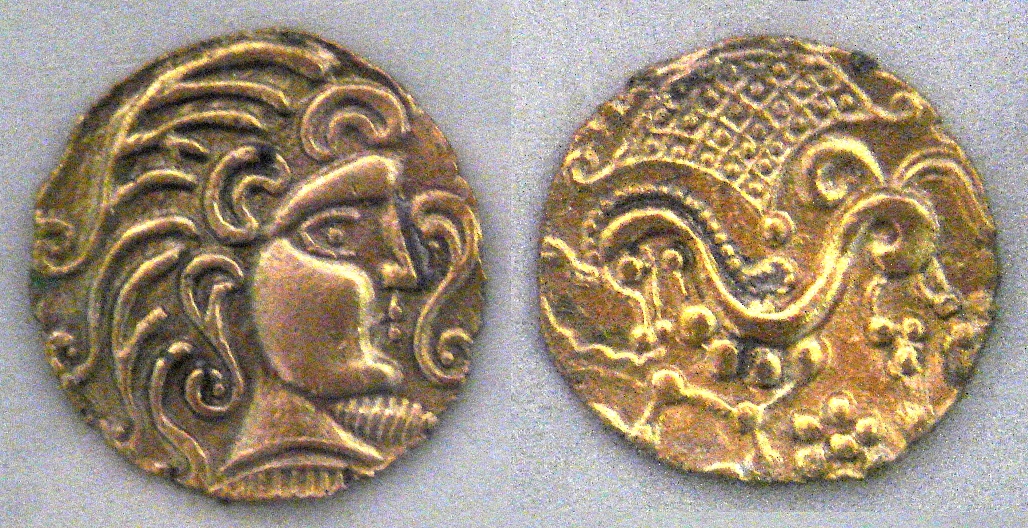|
1436
Year 1436 ( MCDXXXVI) was a leap year starting on Sunday (link will display the full calendar) of the Julian calendar. Events January–December * January 11 – Eric of Pomerania is deposed from the Swedish throne for the second time, only three months after having been reinstated. Engelbrekt Engelbrektsson remains the leader of the land, in his capacity of ''rikshövitsman'' (military commander of the realm). * February – Charles Knutsson becomes joint rikshövitsman with Engelbrekt (the two will share the title until Engelbrekt's death). * April – Paris is recaptured from the English by French forces during the Hundred Years War. * May 4 – Following the murderer of Engelbrekt Engelbrektsson, while on his way to Stockholm for negotiations. Charles Knutsson temporarily holds the position of leader of Sweden alone. The probable first meeting of the Riksdag of the Estates takes place afterwards, in Uppsala, Sweden. * June 25 ** Scottish princess ... [...More Info...] [...Related Items...] OR: [Wikipedia] [Google] [Baidu] |
Siege Of Calais (1436)
The siege of Calais between June and July 1436 was a failed siege of English-held Calais by Philip the Good, Duke of Burgundy, and Flemish militia. Prelude England and Burgundy had been allies against France in the Hundred Years' War since 1419. But when the English walked out of peace talks during the Congress of Arras in 1435, the Duke of Burgundy stayed and concluded the Treaty of Arras with the French King on 21 September 1435, thus switching sides in the war. The Duke's betrayal caused an outrage among the English, and the London populace was allowed to plunder possessions of Flemish, Dutch and Picard merchants in the city, all subjects of the Duke of Burgundy. There was also an incursion in the Duke's territories by an English force of 2000 men, who defeated 1500 Flemish soldiers under Jean II de Croÿ in the Boulonnais. Philip the Good reacted by declaring war on England. In this, he was supported by the Flemish cities, who saw their trade with England menaced. ... [...More Info...] [...Related Items...] OR: [Wikipedia] [Google] [Baidu] |
Florence Cathedral
Florence Cathedral, formally the (; in English Cathedral of Saint Mary of the Flower), is the cathedral of Florence, Italy ( it, Duomo di Firenze). It was begun in 1296 in the Gothic style to a design of Arnolfo di Cambio and was structurally completed by 1436, with the dome engineered by Filippo Brunelleschi. The exterior of the basilica is faced with polychrome marble panels in various shades of green and pink, bordered by white, and has an elaborate 19th-century Gothic Revival façade by Emilio De Fabris. The cathedral complex, in Piazza del Duomo, includes the Baptistery and Giotto's Campanile. These three buildings are part of the UNESCO World Heritage Site covering the historic centre of Florence and are a major tourist attraction of Tuscany. The basilica is one of Italy's largest churches, and until the development of new structural materials in the modern era, the dome was the largest in the world. It remains the largest brick dome ever constructed. The cathedral is ... [...More Info...] [...Related Items...] OR: [Wikipedia] [Google] [Baidu] |
Filippo Brunelleschi
Filippo Brunelleschi ( , , also known as Pippo; 1377 – 15 April 1446), considered to be a founding father of Renaissance architecture, was an Italian architect, designer, and sculptor, and is now recognized to be the first modern engineer, planner, and sole construction supervisor. In 1421, Brunelleschi became the first person to receive a patent in the Western world. He is most famous for designing the dome of the Florence Cathedral, a feat of engineering that had not been accomplished since antiquity, as well as the development of the mathematical technique of linear perspective in art which governed pictorial depictions of space until the late 19th century and influenced the rise of modern science. His accomplishments also include other architectural works, sculpture, mathematics, engineering, and ship design. His principal surviving works can be found in Florence. Biography Early life Brunelleschi was born in Florence, Italy, in 1377. His family consisted of his father, ... [...More Info...] [...Related Items...] OR: [Wikipedia] [Google] [Baidu] |
Eric Of Pomerania
Eric of Pomerania (1381 or 1382 – 24 September 1459) was the ruler of the Kalmar Union from 1396 until 1439, succeeding his grandaunt, Queen Margaret I. He is known as Eric III as King of Norway (1389–1442), Eric VII as King of Denmark (1396–1439) and has been called Eric XIII as King of Sweden (1396–1434, 1436–39). Later, in all three countries he became more commonly known as ''Erik av Pommern'' (Eric of Pomerania), a pejorative intended to point out that he belonged elsewhere. Eric was ultimately deposed from all three kingdoms of the union, but in 1449 he inherited one of the partitions of the Duchy of Pomerania and ruled it as duke until his death in 1459. Succession background Eric was born in either 1381 or 1382 in Darłowo, Pomerania (Poland). Born Bogusław, Eric was the son of Wartislaw VII, Duke of Pomerania, and Maria of Mecklenburg-Schwerin. Margaret I, who ruled the kingdoms of Denmark, Norway, and Sweden, wanted her realm to be unified and peaceful ... [...More Info...] [...Related Items...] OR: [Wikipedia] [Google] [Baidu] |
Engelbrekt Engelbrektsson
Engelbrekt Engelbrektsson (1390s – 27 April/4 May 1436) was a Swedish nobleman, rebel leader and military boss of German ancestry. He was the leader of the Engelbrekt rebellion in 1434 against Eric of Pomerania, king of the Kalmar Union. Engelbrekt Parish (''Engelbrekts församling'') and Engelbrekt Church (''Engelbrektskyrkan'') in the Church of Sweden Diocese of Stockholm were both named in his honor. Biography Engelbrekt Engelbrektsson was the owner of a mine and ironworks in the historic mining region of Bergslagen. He was from the parish of Norberg (''Norbergs socken'') in Västmanland. His family originally came from Germany, having migrated to Sweden in the 1360s.NE (2023)''Engelbrekt Engelbrektsson''(''Nationalencyklopedin''). (Link checked 13 May 2013.) The family coat of arms shows three half-lilies formed into a triangle. Engelbrekt was dissatisfied by the numerous offences of the Danish local bailiffs and heavy taxation. In 1434 he started a rebellion with t ... [...More Info...] [...Related Items...] OR: [Wikipedia] [Google] [Baidu] |
Margaret Stewart, Dauphine Of France
:''See also Margaret Stewart.'' Margaret Stewart (french: Marguerite; 25 December 1424 – 16 August 1445) was a princess of Scotland and the dauphine of France. She was the firstborn child of King James I of Scotland and Joan Beaufort. She married the eldest son of the king of France, Louis, Dauphin of France, at the age of eleven. Their marriage was unhappy, and she died childless at the age of 20, apparently of a fever. Early life She was born in Perth, Scotland, to James I of Scotland and Joan Beaufort, a cousin of Henry V of England. Margaret was the first of six daughters and twin sons born to her parents. Her surviving brother James would become James II of Scotland at the age of six. Marriage Margaret was Charles VII of France's diplomatic choice for daughter-in-law. The marriage was forced upon Charles's twelve-year-old son, Louis, which did not help their relationship. However, royal marriages in the 15th century were always political.Tyrell, Joseph M. Louis XI. ... [...More Info...] [...Related Items...] OR: [Wikipedia] [Google] [Baidu] |
Louis XI Of France
Louis XI (3 July 1423 – 30 August 1483), called "Louis the Prudent" (french: le Prudent), was King of France from 1461 to 1483. He succeeded his father, Charles VII. Louis entered into open rebellion against his father in a short-lived revolt known as the Praguerie in 1440. The king forgave his rebellious vassals, including Louis, to whom he entrusted the management of the Dauphiné, then a province in southeastern France. Louis's ceaseless intrigues, however, led his father to banish him from court. From the Dauphiné, Louis led his own political establishment and married Charlotte of Savoy, daughter of Louis, Duke of Savoy, against the will of his father. Charles VII sent an army to compel his son to his will, but Louis fled to Burgundy, where he was hosted by Philip the Good, the Duke of Burgundy, Charles' greatest enemy. When Charles VII died in 1461, Louis left the Burgundian court to take possession of his kingdom. His taste for intrigue and his intense diplomatic ... [...More Info...] [...Related Items...] OR: [Wikipedia] [Google] [Baidu] |
Sweden
Sweden, ; fi, Ruotsi; fit, Ruotti; se, Ruoŧŧa; smj, Svierik; sje, Sverji; sju, Sverje; sma, Sveerje or ; yi, שוועדן, Shvedn; rmu, Svedikko; rmf, Sveittiko. formally the Kingdom of Sweden, is a Nordic countries, Nordic country located on the Scandinavian Peninsula in Northern Europe. It borders Norway to the west and north, and Finland to the east. At , Sweden is the largest Nordic country and the List of European countries by area, fifth-largest country in Europe. The Capital city, capital and largest city is Stockholm. Sweden has a population of 10.5 million, and a low population density of ; around 87% of Swedes reside in urban areas in the central and southern half of the country. Sweden’s urban areas together cover 1.5% of its land area. Because the country is so long, ranging from 55th parallel north, 55°N to 69th parallel north, 69°N, the climate of Sweden is diverse. Sweden has been inhabited since Prehistoric Sweden, prehistoric times, . T ... [...More Info...] [...Related Items...] OR: [Wikipedia] [Google] [Baidu] |
Sigismund, Holy Roman Emperor
Sigismund of Luxembourg (15 February 1368 – 9 December 1437) was a monarch as King of Hungary and Croatia ('' jure uxoris'') from 1387, King of Germany from 1410, King of Bohemia from 1419, and Holy Roman Emperor from 1433 until his death in 1437, as well as prince-elector of Brandenburg (1378–1388 and 1411–1415). He was the last male member of the House of Luxembourg. Sigismund was the son of Holy Roman Emperor Charles IV and his fourth wife Elizabeth of Pomerania. He married Queen Mary of Hungary in 1385 and was crowned King of Hungary soon after. He fought to restore and maintain authority to the throne. Mary died in 1395, leaving Sigismund the sole ruler of Hungary. In 1396, Sigismund led the Crusade of Nicopolis, but was decisively defeated by the Ottoman Empire. Afterwards, he founded the Order of the Dragon to fight the Turks and secured the thrones of Croatia, Germany and Bohemia. Sigismund was one of the driving forces behind the Council of Constanc ... [...More Info...] [...Related Items...] OR: [Wikipedia] [Google] [Baidu] |
May 4
Events Pre-1600 *1256 – The Augustinian monastic order is constituted at the Lecceto Monastery when Pope Alexander IV issues a papal bull ''Licet ecclesiae catholicae''. *1415 – Religious reformers John Wycliffe and Jan Hus are condemned as heretics at the Council of Constance. * 1436 – Assassination of the Swedish rebel (later national hero) Engelbrekt Engelbrektsson *1471 – Wars of the Roses: The Battle of Tewkesbury: Edward IV defeats a Lancastrian Army and kills Edward of Westminster, Prince of Wales. * 1493 – Pope Alexander VI divides the New World between Spain and Portugal along the Line of Demarcation. 1601–1900 * 1626 – Dutch explorer Peter Minuit arrives in New Netherland (present day Manhattan Island) aboard the ''See Meeuw''. *1686 – The Municipality of Ilagan is founded in the Philippines. * 1776 – Rhode Island becomes the first American colony to renounce allegiance to King George III. * 1799 – F ... [...More Info...] [...Related Items...] OR: [Wikipedia] [Google] [Baidu] |
Charles VIII Of Sweden
Charles VIII ( sv, Karl; 1408–1470), contemporaneously known as Charles II and called Charles I in Norwegian context, was king of Sweden (1448–1457, 1464–1465 and 1467–1470) and king of Norway (1449–1450). Regnal name Charles was the second Swedish king by the name of Charles (Karl). ''Charles VIII'' is a posthumous invention, counting backwards from Charles IX (r. 1604–1611) who adopted his numeral according to a fictitious history of Sweden. Six others before Charles VII are unknown to any sources before Johannes Magnus's 16th century book ', and are considered his invention. Charles was the first Swedish monarch of the name to actually use a regnal number as ''Charles II'' (later retrospectively renumbered VIII), on his wife's tombstone (1451) at Vadstena. Early life Karl Knutsson was born in October 1408 or 1409, at Ekholmen Castle, the son of Knut Tordsson ( Bonde), knight and member of the privy council (''riksråd''), and Margareta Karlsdotter (Sparre av ... [...More Info...] [...Related Items...] OR: [Wikipedia] [Google] [Baidu] |
Paris
Paris () is the capital and most populous city of France, with an estimated population of 2,165,423 residents in 2019 in an area of more than 105 km² (41 sq mi), making it the 30th most densely populated city in the world in 2020. Since the 17th century, Paris has been one of the world's major centres of finance, diplomacy, commerce, fashion, gastronomy, and science. For its leading role in the arts and sciences, as well as its very early system of street lighting, in the 19th century it became known as "the City of Light". Like London, prior to the Second World War, it was also sometimes called the capital of the world. The City of Paris is the centre of the Île-de-France region, or Paris Region, with an estimated population of 12,262,544 in 2019, or about 19% of the population of France, making the region France's primate city. The Paris Region had a GDP of €739 billion ($743 billion) in 2019, which is the highest in Europe. According to the Economis ... [...More Info...] [...Related Items...] OR: [Wikipedia] [Google] [Baidu] |






.jpg)

